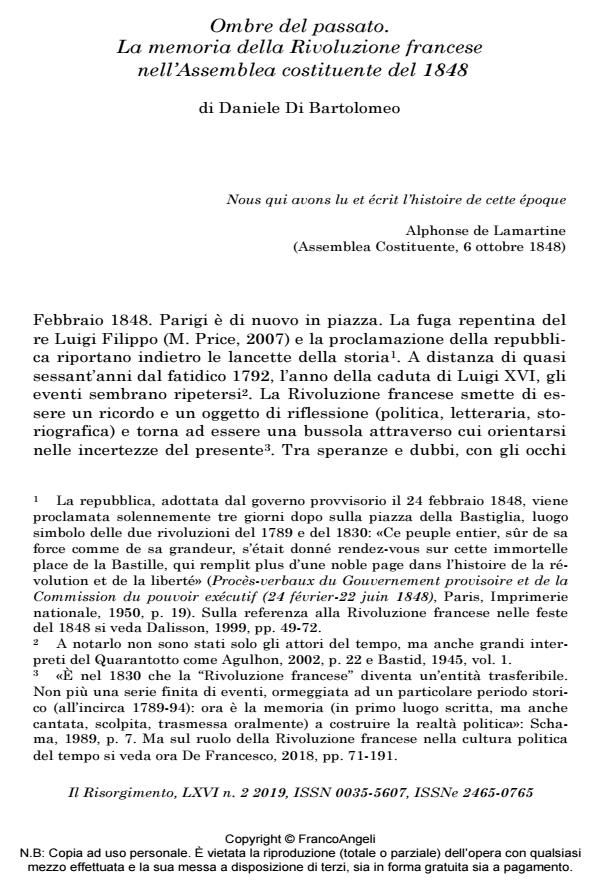Shadows of the Past. The Memory of the French Revolution in the Constituent Assembly of 1848
Journal title IL RISORGIMENTO
Author/s Daniele Di Bartolomeo
Publishing Year 2020 Issue 2019/2
Language Italian Pages 50 P. 129-178 File size 337 KB
DOI 10.3280/RISO2019-002006
DOI is like a bar code for intellectual property: to have more infomation
click here
Below, you can see the article first page
If you want to buy this article in PDF format, you can do it, following the instructions to buy download credits

FrancoAngeli is member of Publishers International Linking Association, Inc (PILA), a not-for-profit association which run the CrossRef service enabling links to and from online scholarly content.
This article examines the debate of the Constituent Assembly which met after the Parisian revolution of February 1848. The author’s intention is to study the weight of the historical precedent of the French Revolution and the Napoleonic era in the conception of the new political-institutional system set up in France after the fall of Louis-Philippe and the proclamation of the Second Republic. The famous and liquidating sentence of Marx about the farcical traits of this political period, which he qualified as a sterile replica of the revolution begun in 1789, has strongly influenced historians who have never questioned the real weight that the historical analogy has had in the choices of the protagonists of 1848.
Keywords: 1848, Political Use of History, French Revolution and Napoleon
Daniele Di Bartolomeo, Ombre del passato. La memoria della Rivoluzione francese nell’Assemblea costituente del 1848 in "IL RISORGIMENTO" 2/2019, pp 129-178, DOI: 10.3280/RISO2019-002006